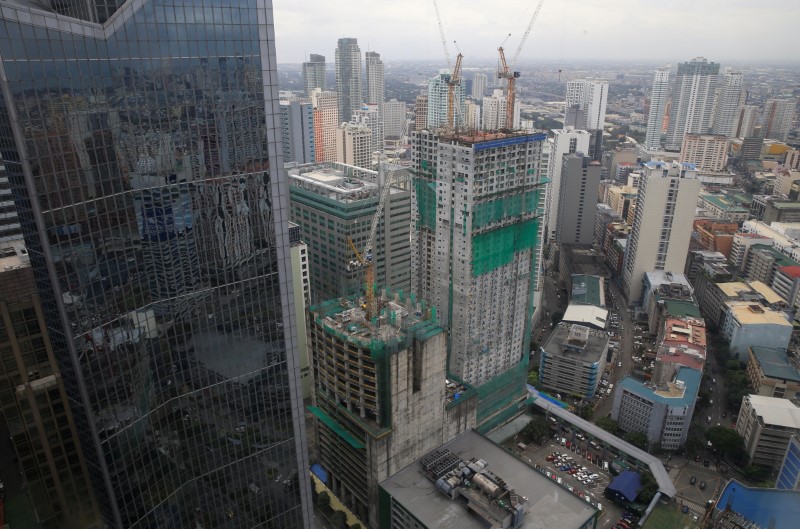MANILA (Reuters) - Philippines' economic growth is expected to have accelerated in the second quarter, thanks to higher government spending, resilient domestic demand and a solid pick up in farm output.
The second quarter data, due on Thursday, will be closely watched by investors nervous about a weakening peso with any uncertainty over the outlook for growth likely to pile pressure on the beleaguered currency.
Manila aims to lift growth to as much as 7.5 percent this year, from 6.9 percent in 2016, as President Rodrigo Duterte's administration prepares for a six-year, $180 billion spending spree on infrastructure.
The big spending plan to repair creaking infrastructure and build new roads, railways and airports form part of an ambitious effort by Duterte to boost growth in the $290 billion consumption-reliant economy to around the 8 percent level.
Economists in a Reuters poll estimated GDP grew 1.6 percent quarter-on-quarter in the three months ended June, quickening from 1.1 percent in the first quarter, though only five of 14 analysts gave sequential forecasts.
From a year earlier, the economy is expected to have expanded by 6.2 percent in the June quarter. Although slower than the first quarter's 6.4 percent pace, it would still make the Philippines the second-fastest growing economy in Asia after China.
"Private consumption expenditure is estimated to have remained robust, boosted by continued expansion in remittances from workers abroad and rapid expansion in household credit," said Rajiv Biswas, Asia Pacific chief economist at IHS Markit.
"Infrastructure spending and residential construction are also expected to have been strong," Biswas added.
PESO NERVES
Policymakers have sought to soothe frayed nerves in the foreign exchange market after the peso hit an 11-year low, saying currency movements do not reflect the underlying strength of the local economy.
A construction boom in the Philippines has contributed to the peso weakening amid a recent surge in capital goods imports.
ING economist Joey Cuyegkeng, who gave a 6.3 forecast for second quarter GDP, said growth could be higher after data on Tuesday showed farm output expanded more than 6 percent in the April-June, better than his forecast.
A stronger-than-expected GDP print could attract portfolio flows, Cuyegkeng said, which could help the peso - Asia's worst performer so far this year - pare its losses against the dollar.
Economic Planning Secretary Ernesto Pernia said last week a 7 percent growth rate in the June quarter was possible, because of improving exports and higher public spending.
Treasury data showed government spending climbed more than 16 percent in the second quarter from the first.
The Philippines has clocked 73 quarters of uninterrupted growth, allowing the central bank to leave policy settings on hold since it raised interest rates by 25 basis points in September 2014.
The International Monetary Fund trimmed its 2017 growth forecast for the Philippines to 6.6 percent from 6.8 percent, but was optimistic the economy would grow strongly in the medium term.
